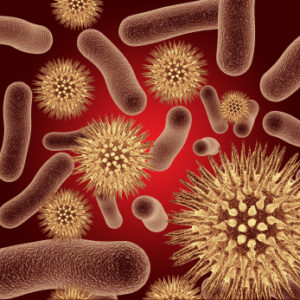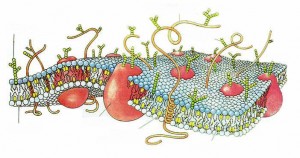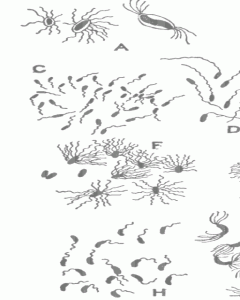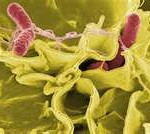
People work together in a committee to solve problems, speaking and listening to each other, analyzing and synthesizing data, then eventually come together to speak as one voice.
The brain does the same thing. It receives a variety of sensory information, then synthesizes and analyzes the data by sending it into various centers and loops. It then determines a course of action and communicates with others.
The microbe seems to do much of this without neurons and a brain. Individual microbes solve complex problems, such as locating food, evading predators, and communicating for complex group activity. Microbes carry out these functions using at least six capacities that we have traditionally attributed only to brains:
 Microbes have specialized parts of their cell membrane that act as sensory organs, sending information to be processed into the cell when mechanically or chemically stimulated. This sensory information triggers responses. Recently a hexagonal honeycomb lattice receptor in microbes was described showing great chemical sensitivity and an intricate structure of thousands of receptor molecules that trigger a wide range of responses to chemical changes. This process is analogous to what happens in the brain when stimulated sensory neurons send information to other neurons, which in turn stimulate action.
Microbes have specialized parts of their cell membrane that act as sensory organs, sending information to be processed into the cell when mechanically or chemically stimulated. This sensory information triggers responses. Recently a hexagonal honeycomb lattice receptor in microbes was described showing great chemical sensitivity and an intricate structure of thousands of receptor molecules that trigger a wide range of responses to chemical changes. This process is analogous to what happens in the brain when stimulated sensory neurons send information to other neurons, which in turn stimulate action.
Varied Cilia in Bacteria Microbes send electrical signals within the cell. A microbe bumps into a wall and an electrical current travels immediately from one part of the cell to another. This current changes the beat of the microbe’s motor, called the cilia, which alters its course. This electrical signal is like those used by neurons to send information throughout the brain.
- Microbes move using contractile proteins. Contractile proteins interact to move and spread neurons in the developing brain. Also, contractile proteins are crucial in building the connections to other cells through dendrites and axons.
 Microbes secrete chemicals to communicate with other cells, immobilize other cells, kill and eat prey, and form together for group behavior such as building slime mold structures. Similarly, neurons signal each other with chemicals as well as with electricity. Neurons also secrete hormones that travel throughout the body to trigger responses from multiple cells.
Microbes secrete chemicals to communicate with other cells, immobilize other cells, kill and eat prey, and form together for group behavior such as building slime mold structures. Similarly, neurons signal each other with chemicals as well as with electricity. Neurons also secrete hormones that travel throughout the body to trigger responses from multiple cells.- Microbes respond simultaneously to temperature, chemicals, and the touch of other cells. They make decisions about which way to move and what to do next; they successfully integrate multiple sources of sensory information. In the brain, decisions are also made based upon multiple sensory inputs through complex nervous system networks.
 Microbes act like individuals when not responding to sensory stimuli from the environment. They respond to internal clocks with some behaviors triggered by the time of day. They can move without outside stimulation, for example when searching for food. Brains also respond to internal clocks and show individual behavior when not responding to others.
Microbes act like individuals when not responding to sensory stimuli from the environment. They respond to internal clocks with some behaviors triggered by the time of day. They can move without outside stimulation, for example when searching for food. Brains also respond to internal clocks and show individual behavior when not responding to others.
In an excellent and provocative book on the world of the cell, Wetware, the biologist Dennis Bray describes the cellular functions so well that he was criticized for implying that microbes are sentient. He explains that although microbes appear to have sentience he thinks all of these functions can be explained with “wet” computer mechanisms.
But is this so? Can we really explain all of the abilities, or brain-like circuits, of the microbe in computer terms? Is it not also possible that some of this capacity is a form of sentience that facilitates these complex decisions and responses?



